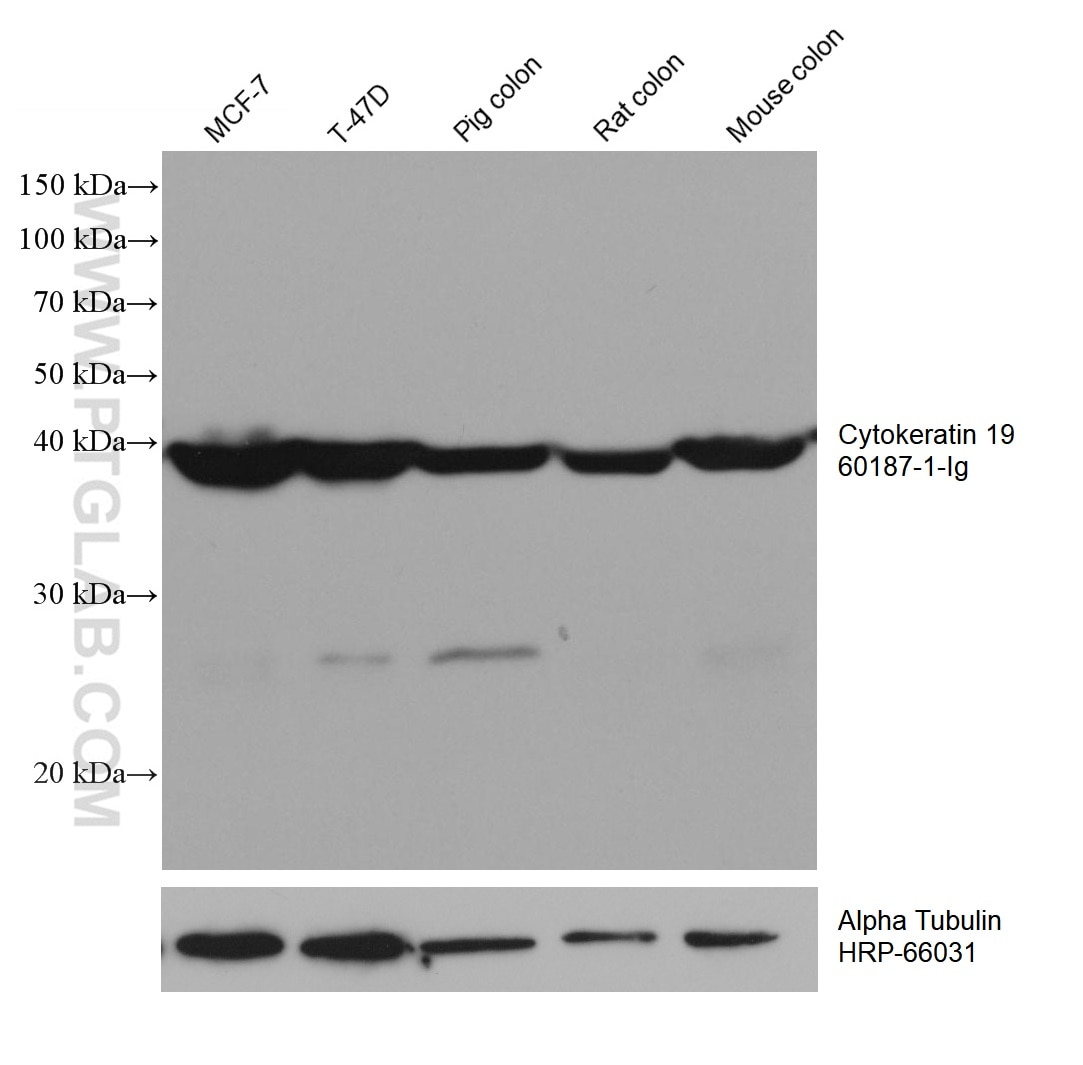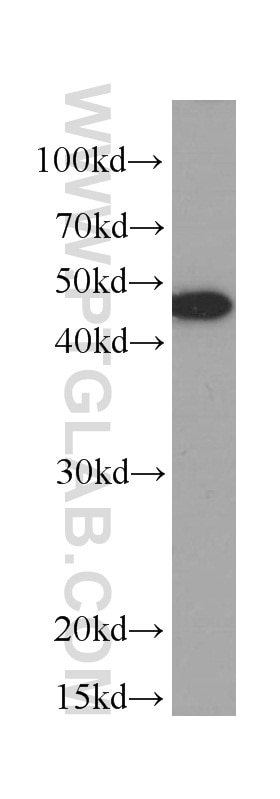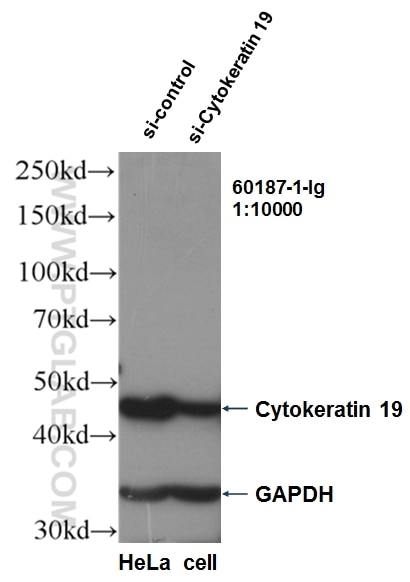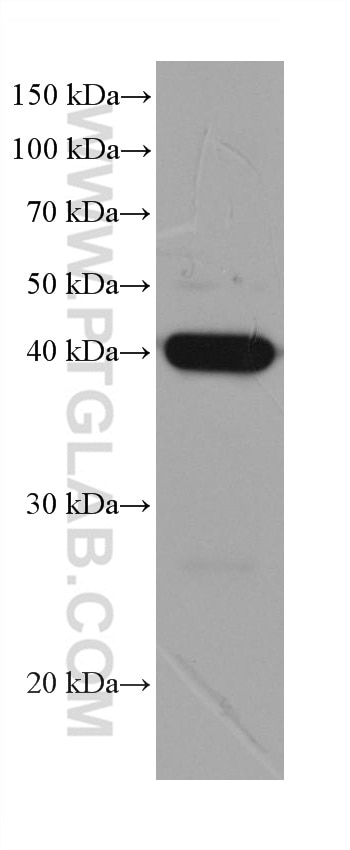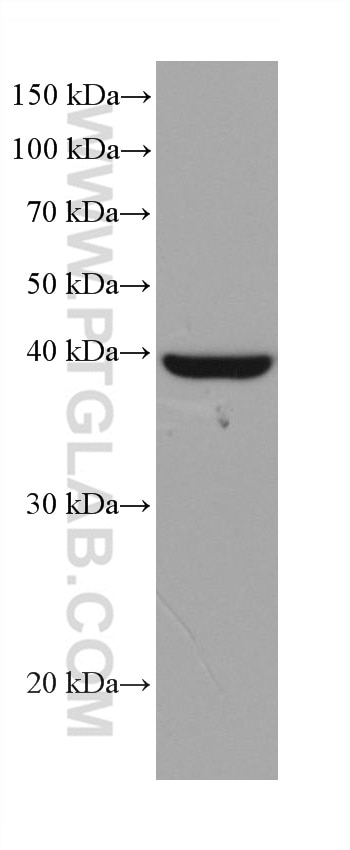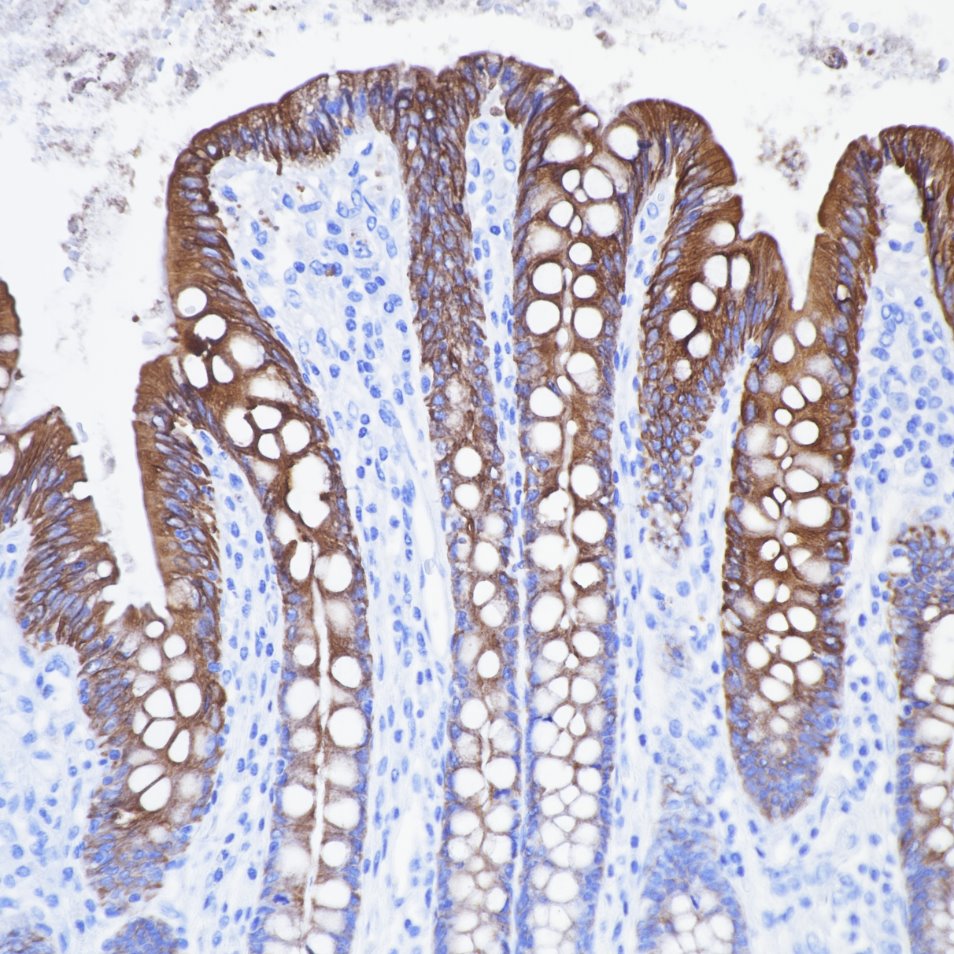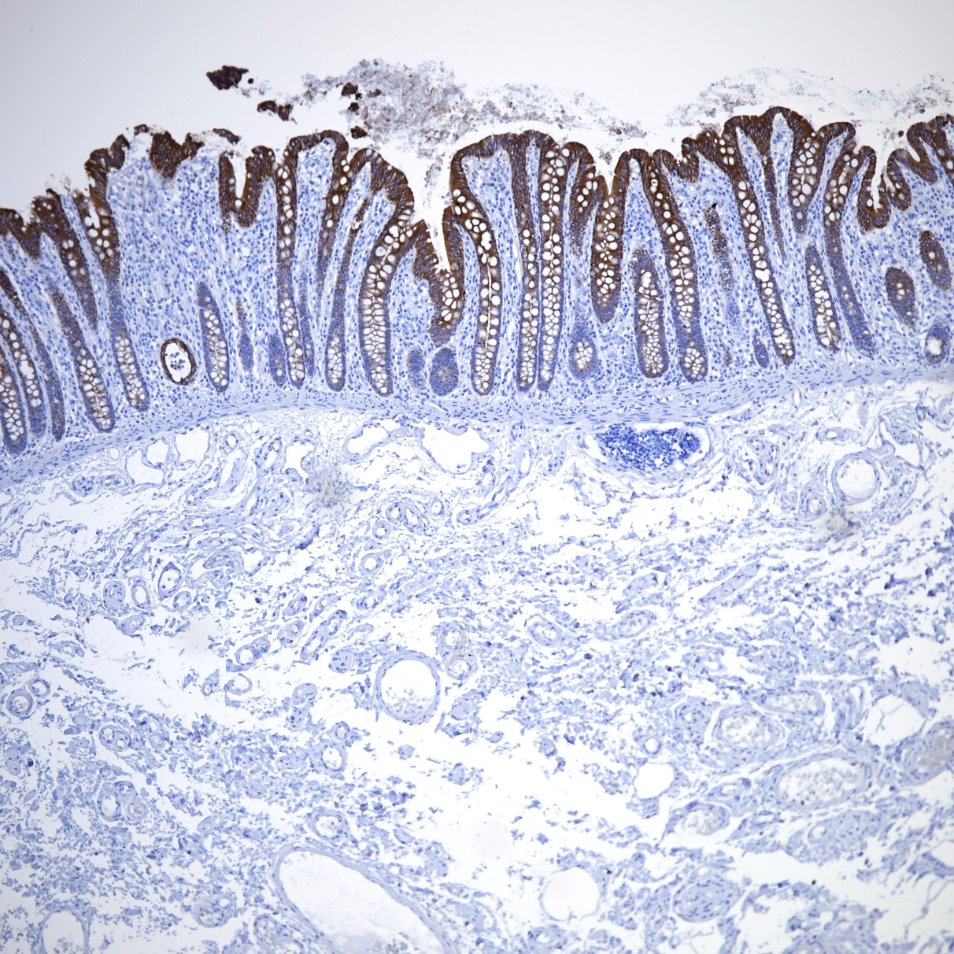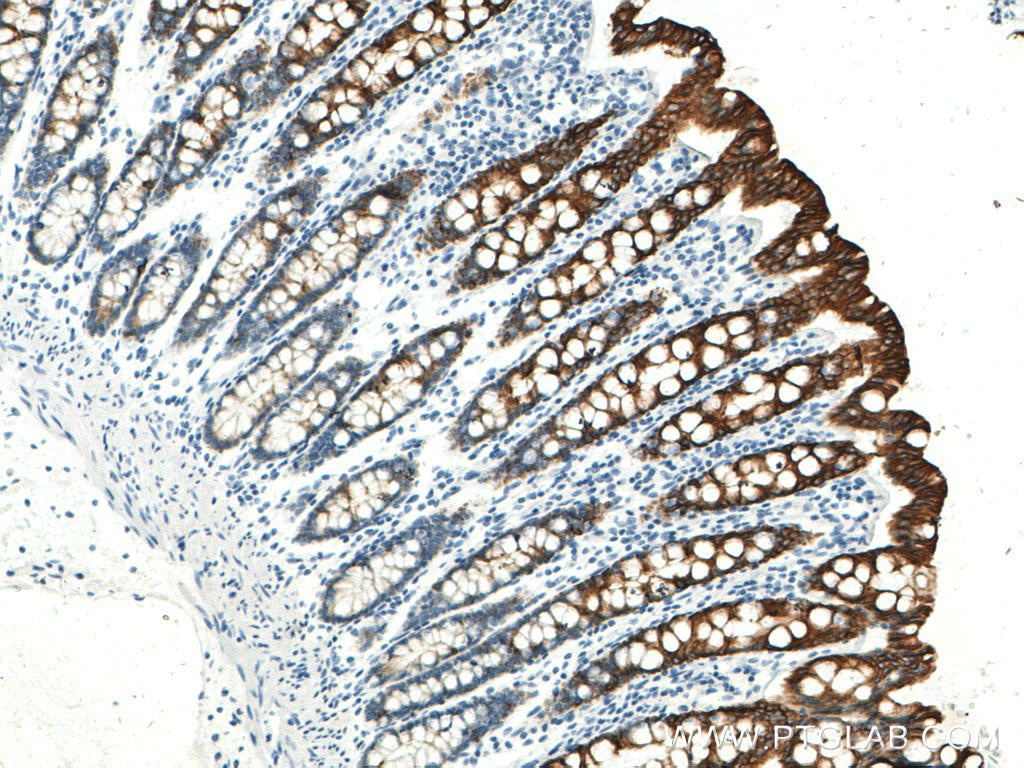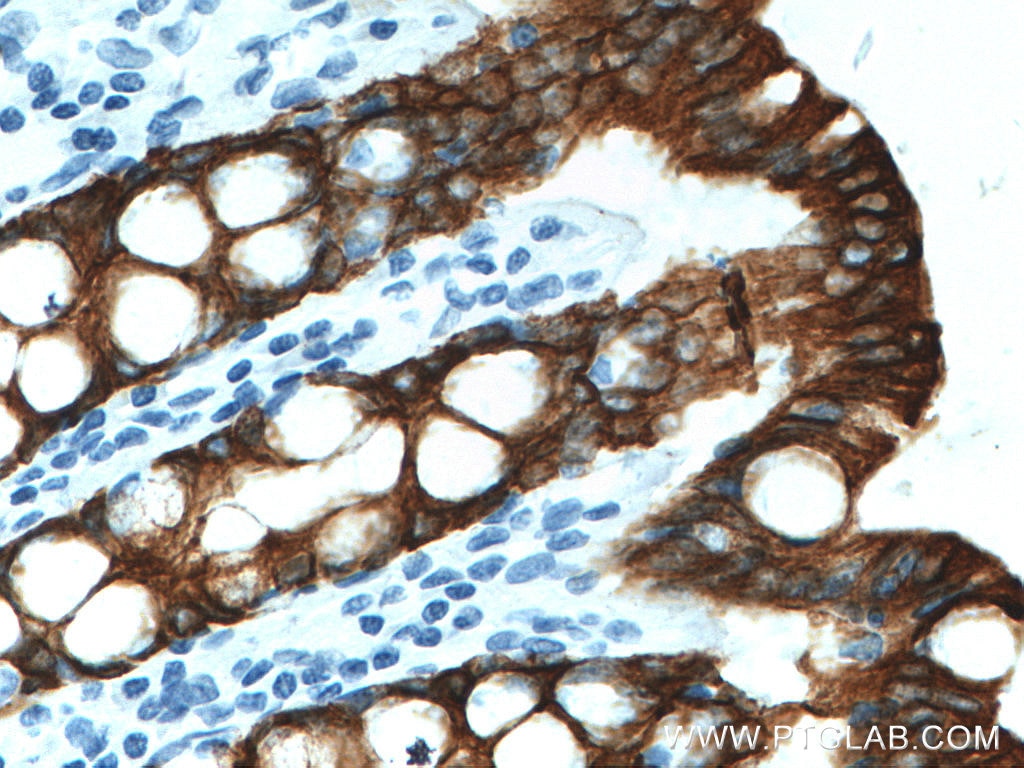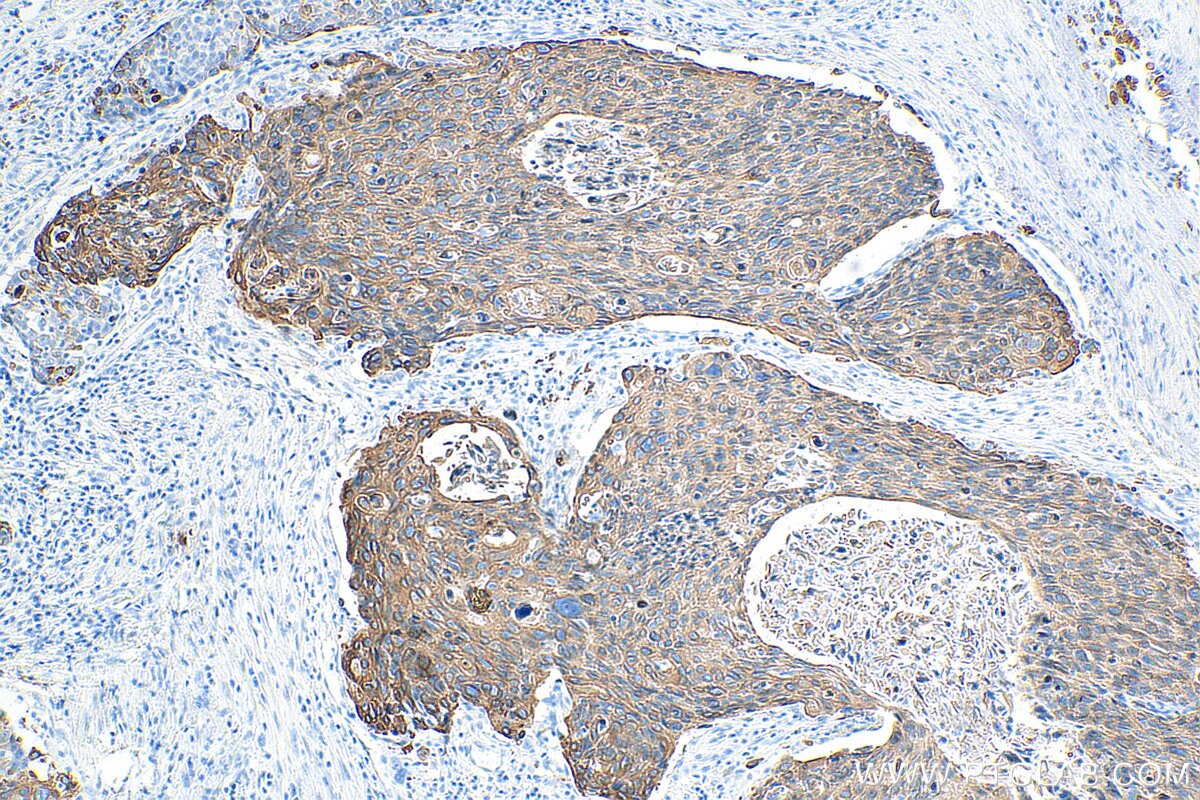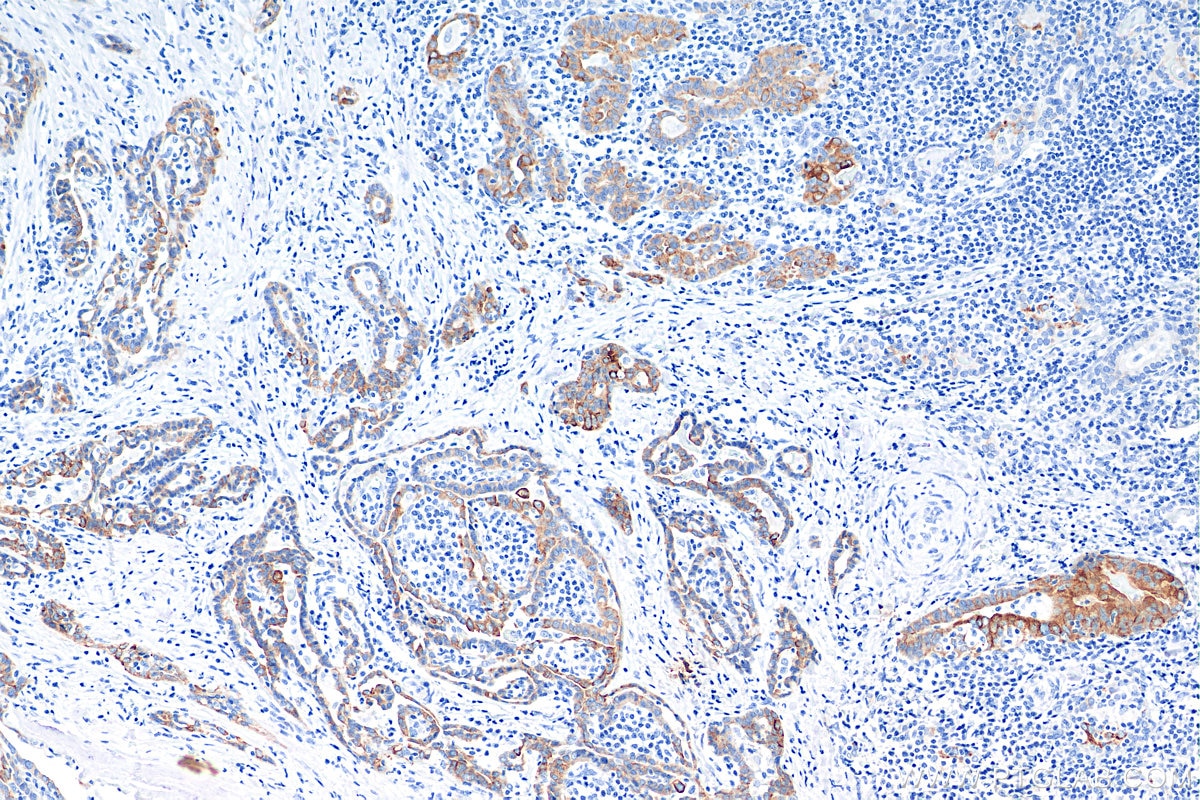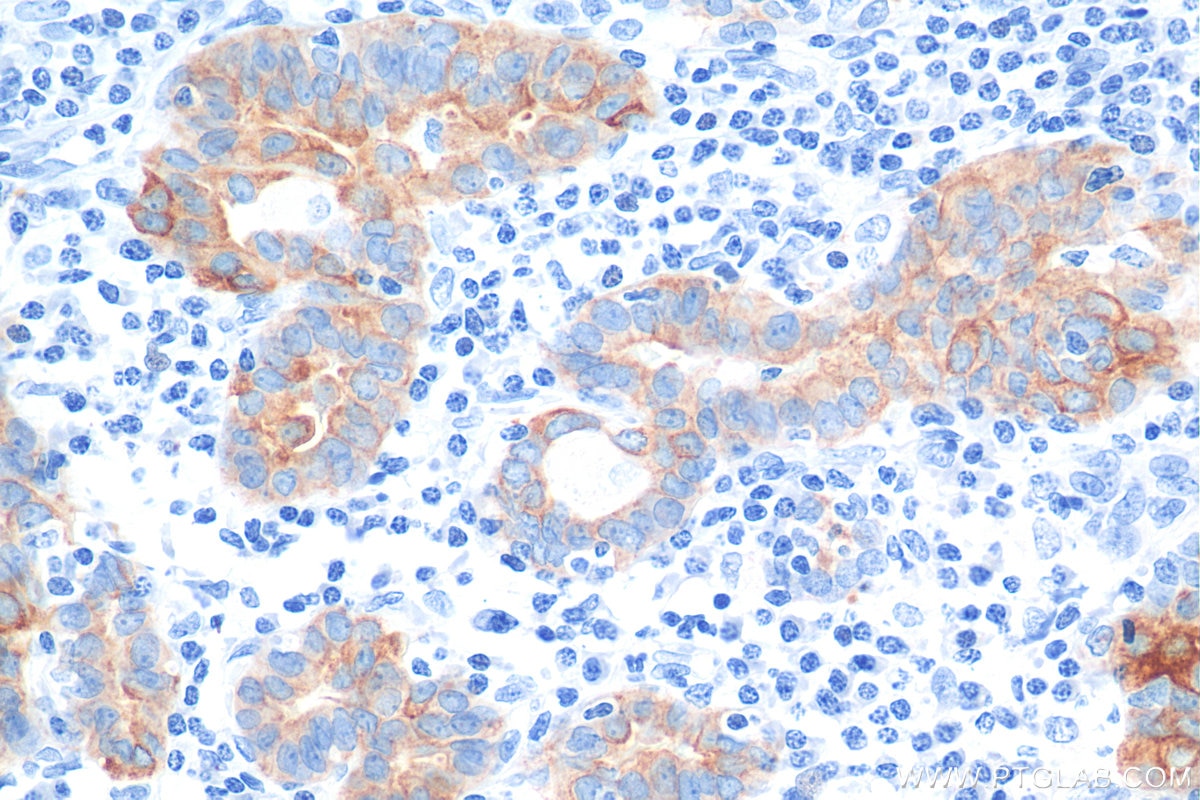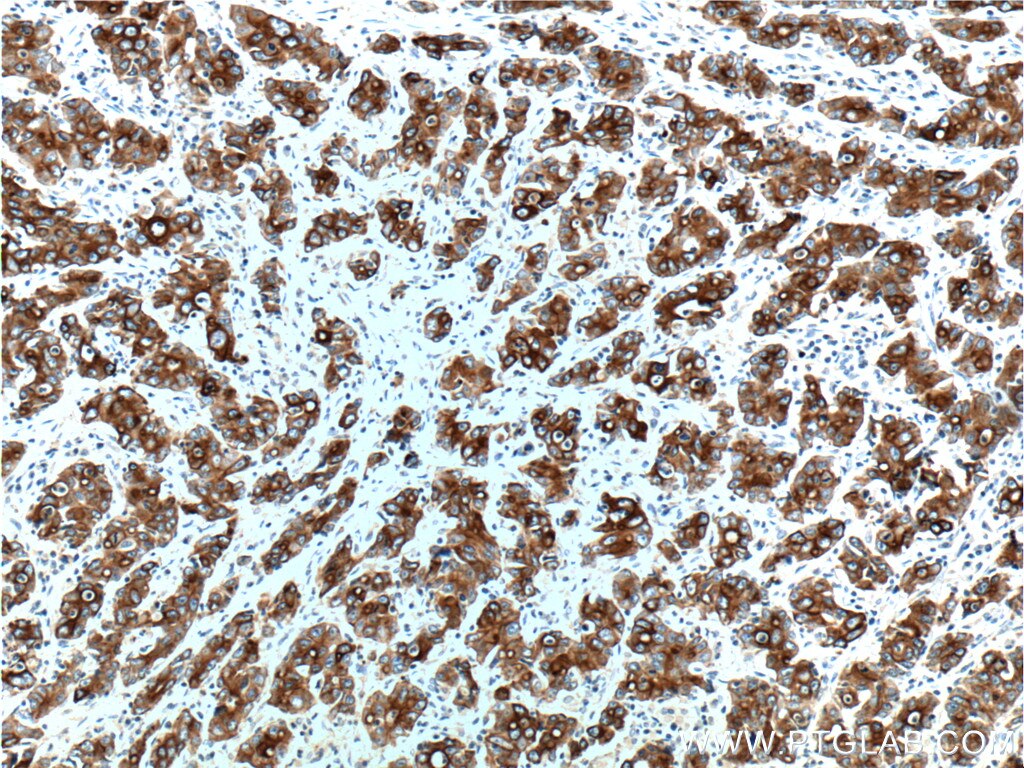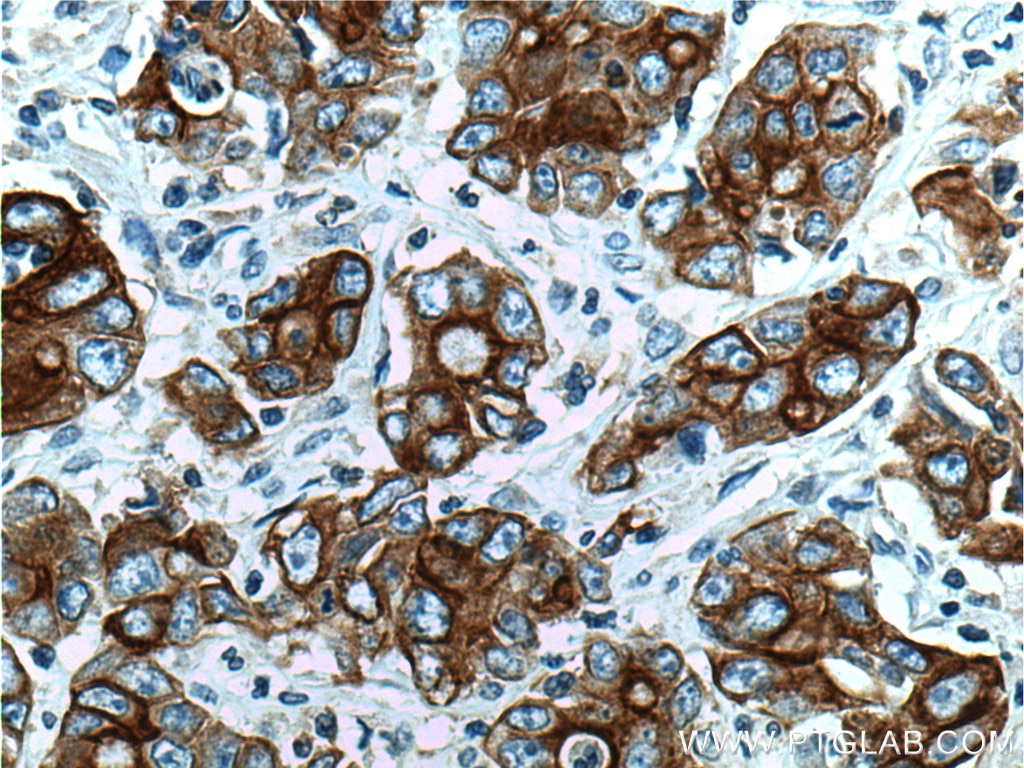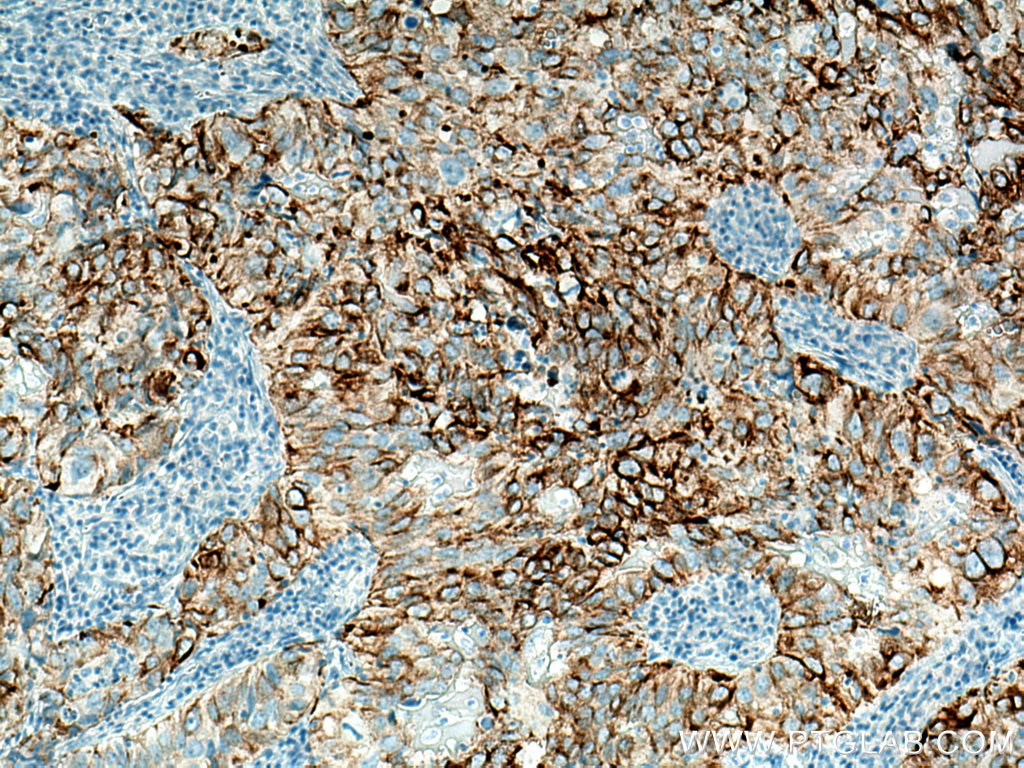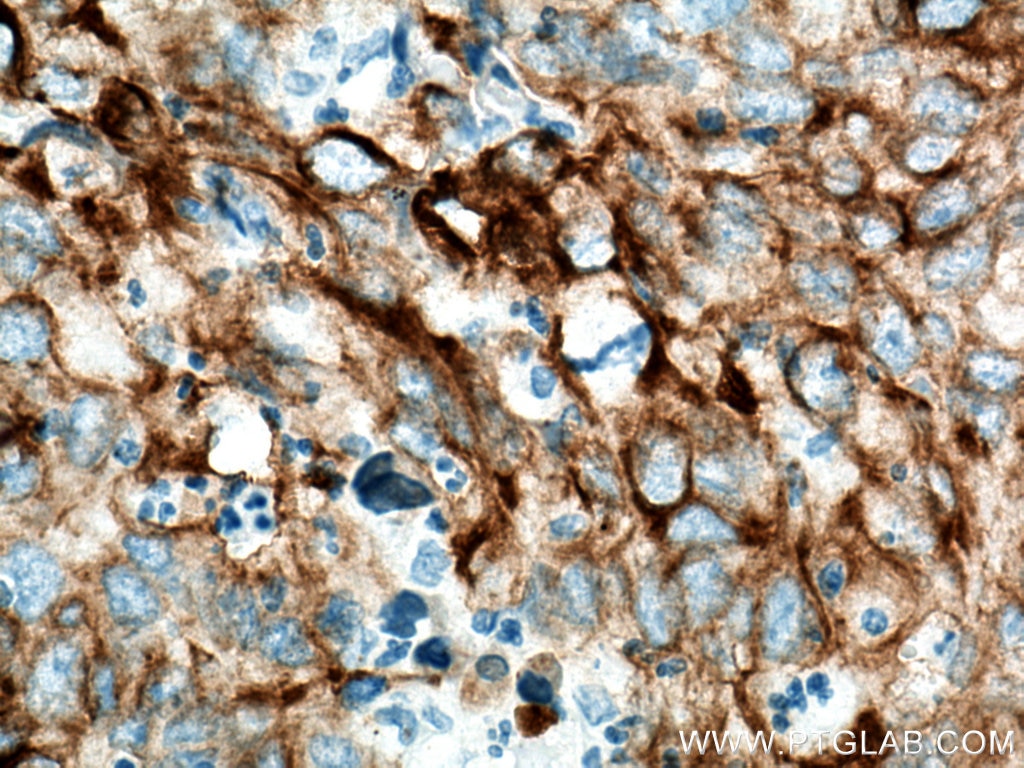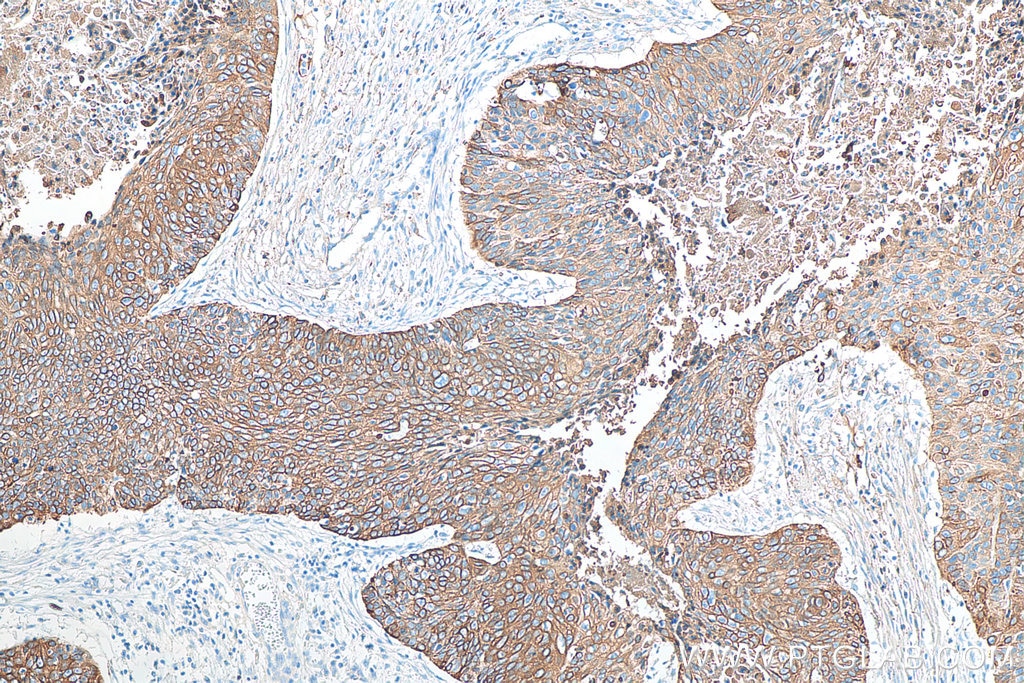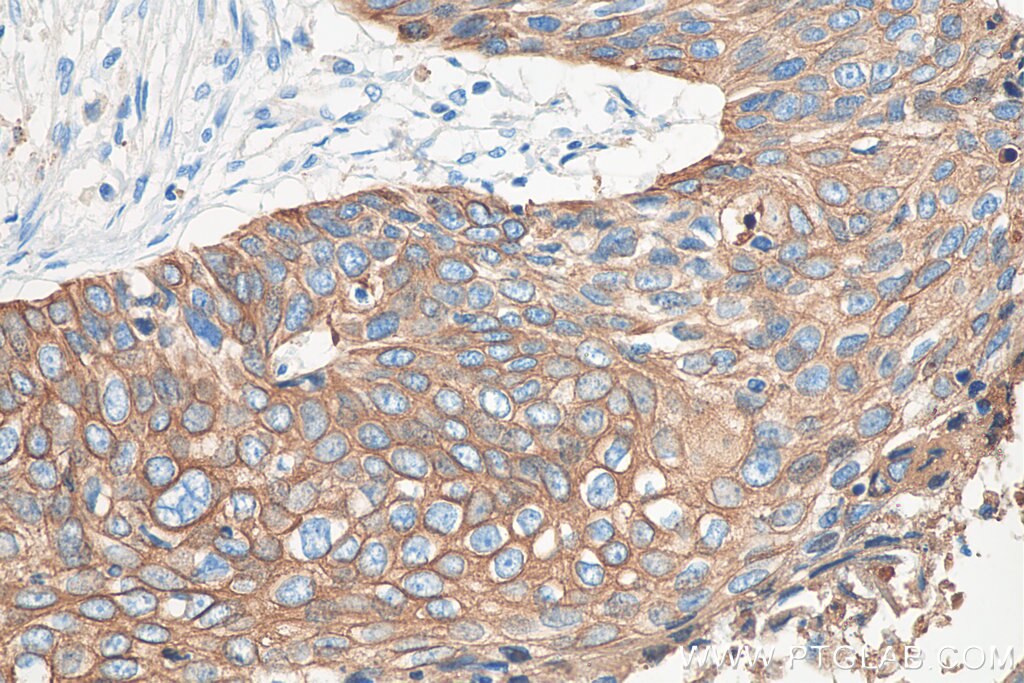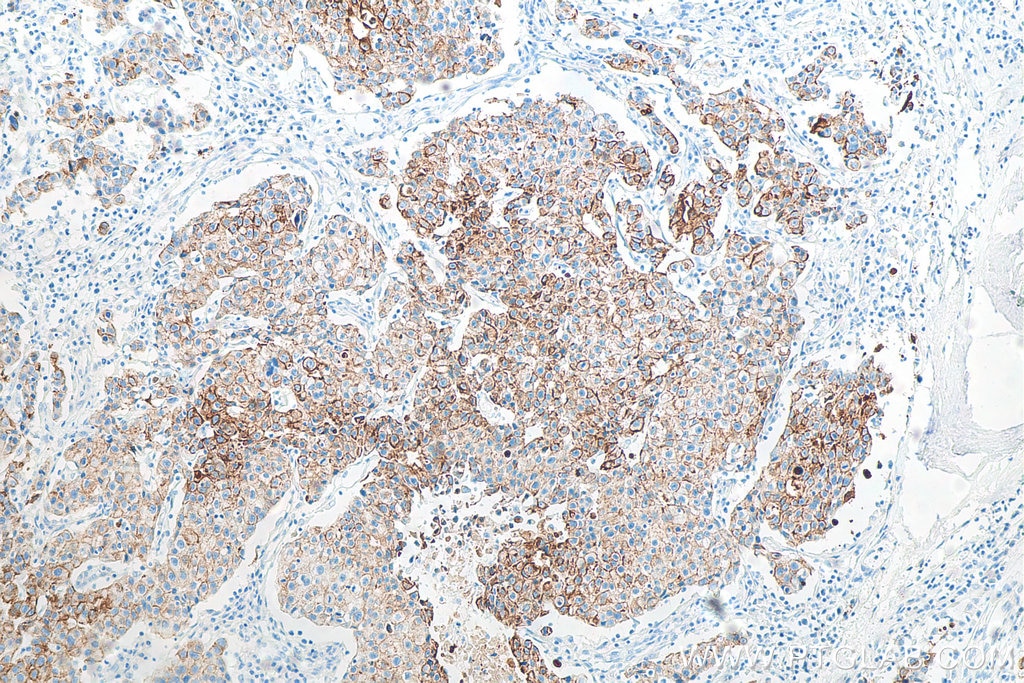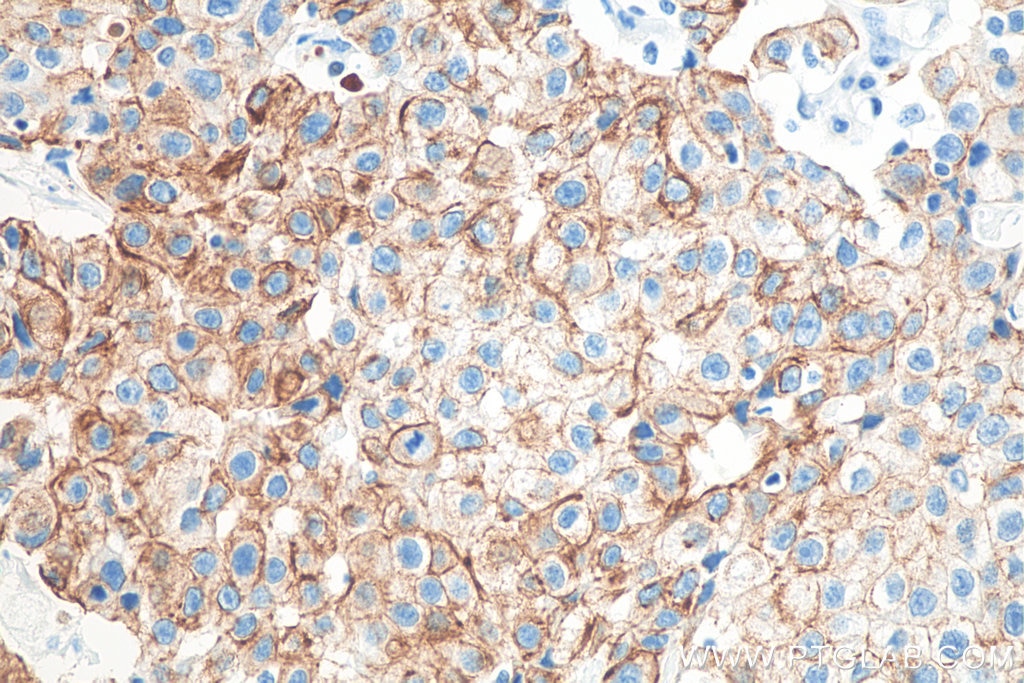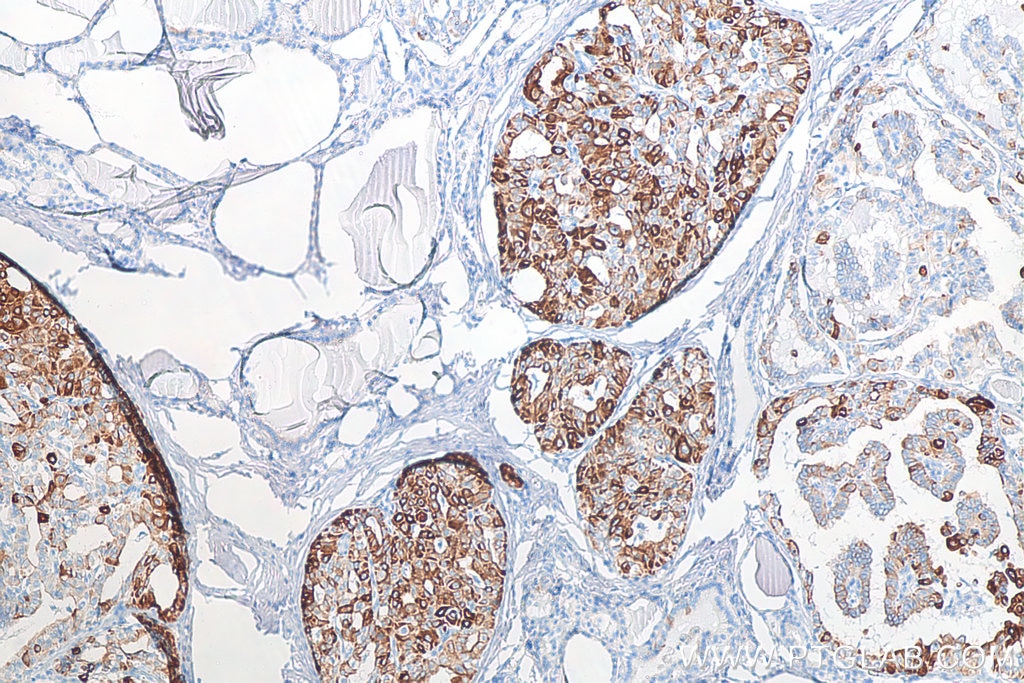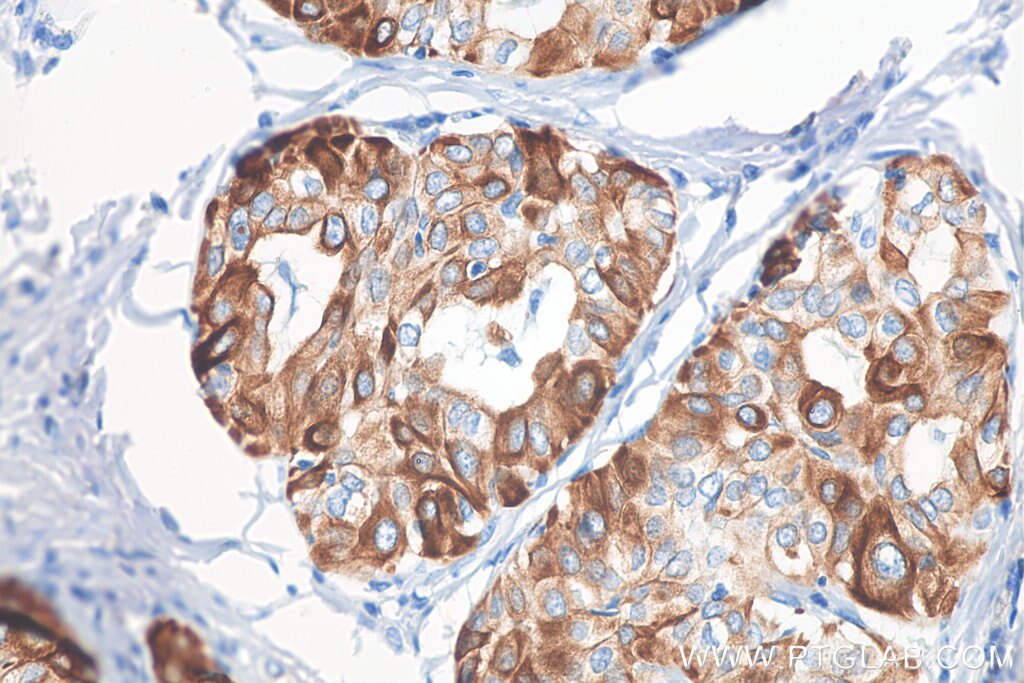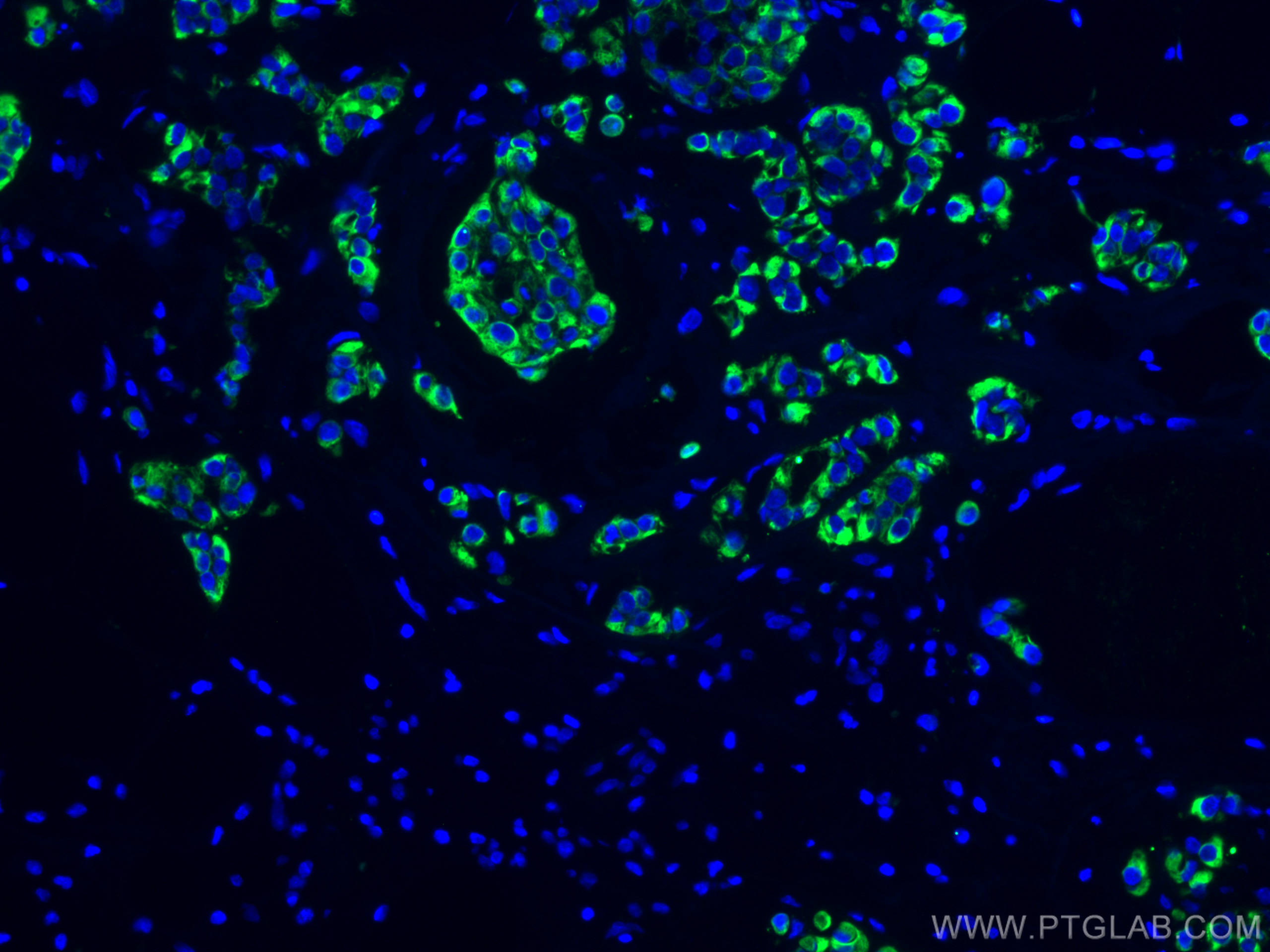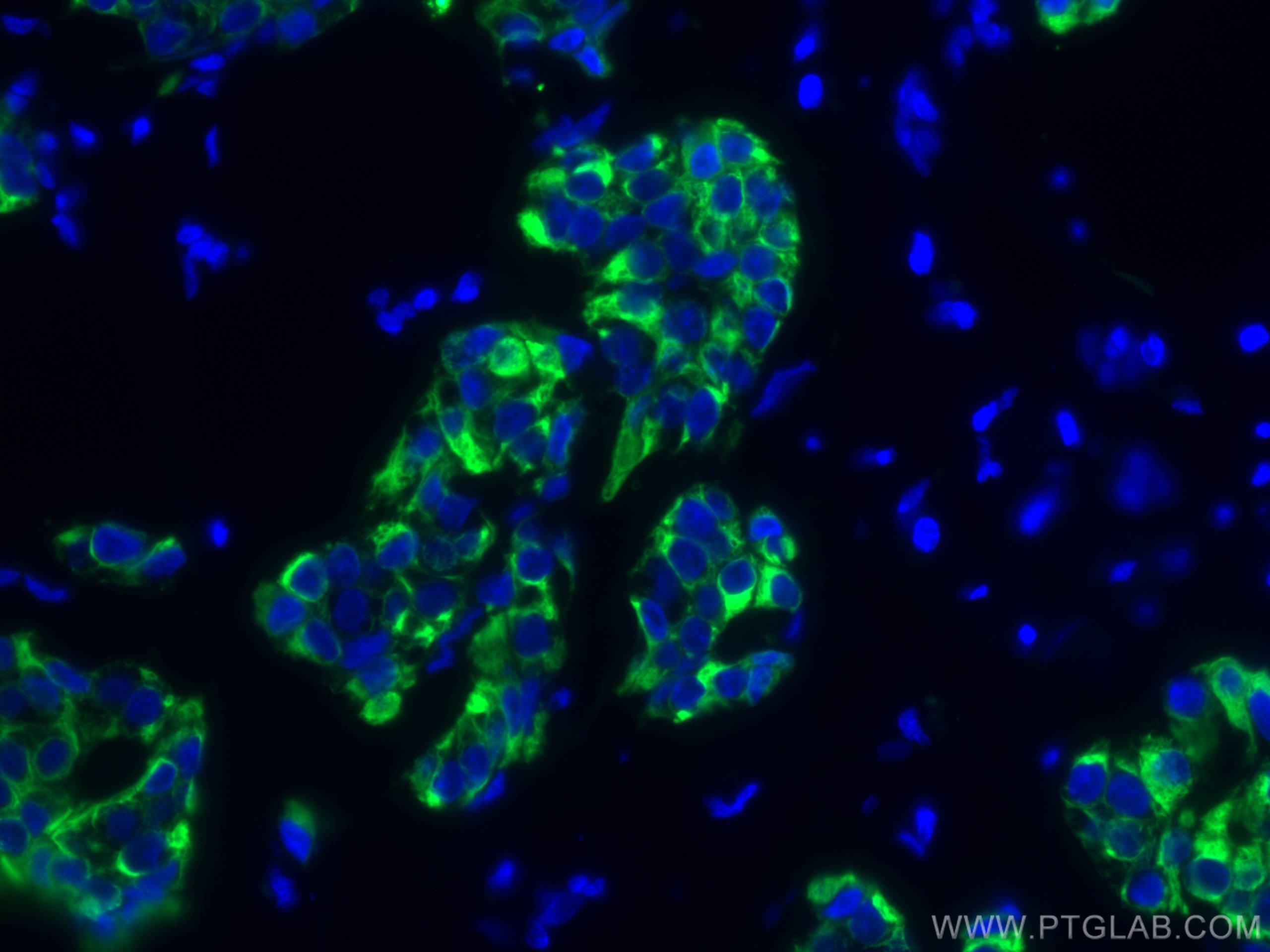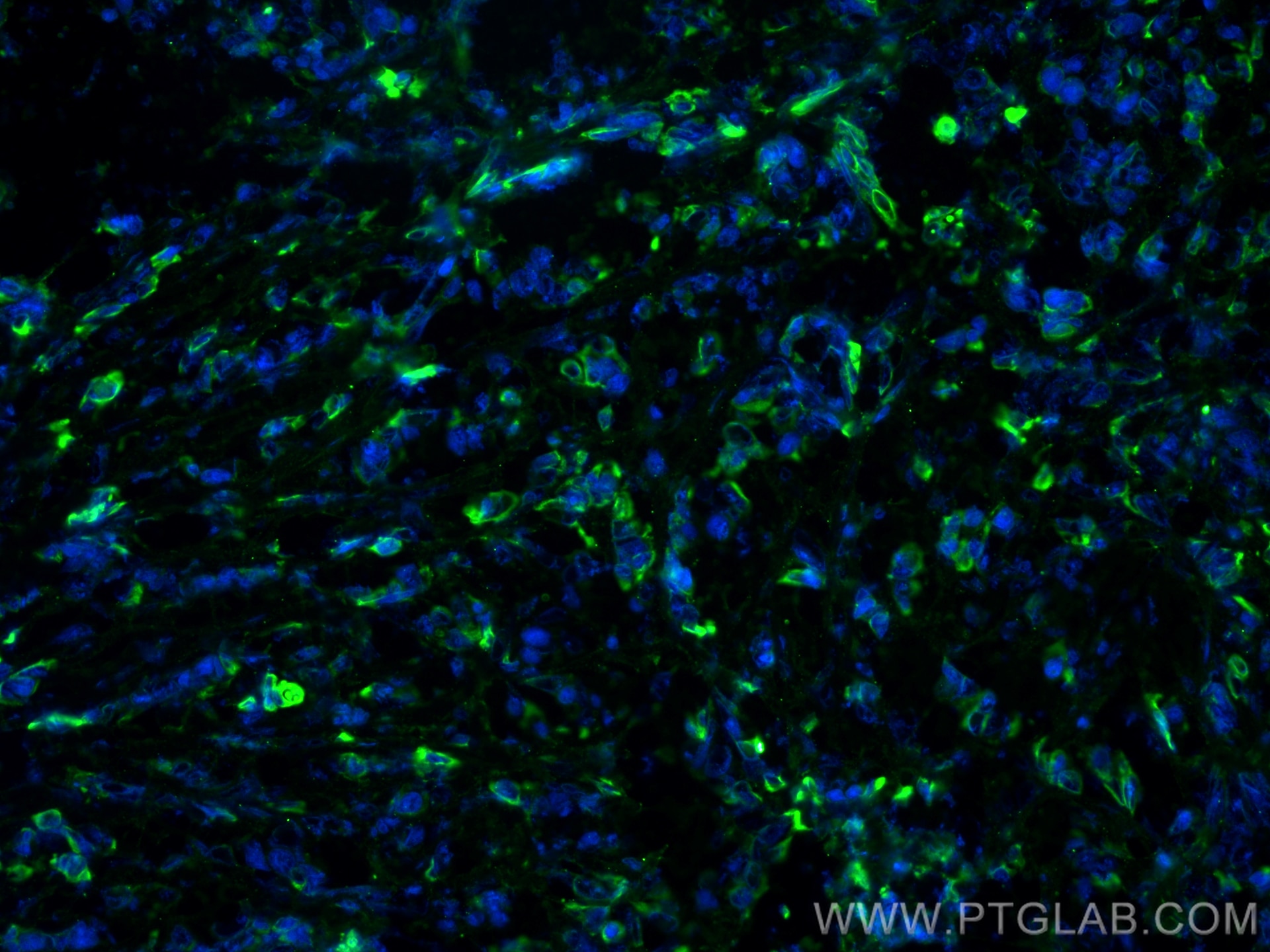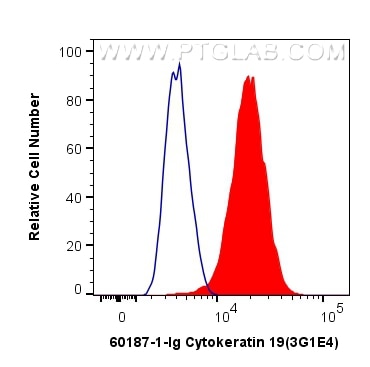- Phare
- Validé par KD/KO
Anticorps Monoclonal anti-Cytokeratin 19
Cytokeratin 19 Monoclonal Antibody for WB, IHC, IHC-Autostainer, IF-P, IF-Fro, FC (Intra), ELISA
Hôte / Isotype
Mouse / IgG2b
Réactivité testée
Humain, porc, rat, souris
Applications
WB, IHC, IHC-Autostainer, IF-P, IF-Fro, FC (Intra), ELISA
Conjugaison
Non conjugué
CloneNo.
3G1E4
N° de cat : 60187-1-Ig
Synonymes
Galerie de données de validation
Applications testées
| Résultats positifs en WB | cellules MCF-7, cellules HaCaT, cellules HeLa, cellules PC-3, cellules T-47D, tissu de côlon de porc, tissu de côlon de rat, tissu de côlon de souris |
| Résultats positifs en IHC-Autostainer | tissu de côlon humain, |
| Résultats positifs en IHC | tissu de côlon humain, tissu de cancer de la thyroïde humain, tissu de cancer de l'estomac humain, tissu de cancer de l'œsophage humain, tissu de cancer du poumon humain, tissu de cancer du sein humain il est suggéré de démasquer l'antigène avec un tampon de TE buffer pH 9.0; (*) À défaut, 'le démasquage de l'antigène peut être 'effectué avec un tampon citrate pH 6,0. |
| Résultats positifs en IF-P | tissu de cancer du sein humain, |
| Résultats positifs en IF-Fro | mouse breast cancer, |
| Résultats positifs en FC (Intra) | cellules HeLa |
Dilution recommandée
| Application | Dilution |
|---|---|
| Western Blot (WB) | WB : 1:20000-1:100000 |
| Immunohistochimie (IHC)-AUTOSTAINER | IHC-AUTOSTAINER : 1:12500-1:50000 |
| Immunohistochimie (IHC) | IHC : 1:1000-1:51200 |
| Immunofluorescence (IF)-P | IF-P : 1:200-1:800 |
| Immunofluorescence (IF)-FRO | IF-FRO : 1:200-1:800 |
| Flow Cytometry (FC) (INTRA) | FC (INTRA) : 0.40 ug per 10^6 cells in a 100 µl suspension |
| It is recommended that this reagent should be titrated in each testing system to obtain optimal results. | |
| Sample-dependent, check data in validation data gallery | |
Applications publiées
| WB | See 3 publications below |
| IHC | See 3 publications below |
| IF | See 10 publications below |
Informations sur le produit
60187-1-Ig cible Cytokeratin 19 dans les applications de WB, IHC, IHC-Autostainer, IF-P, IF-Fro, FC (Intra), ELISA et montre une réactivité avec des échantillons Humain, porc, rat, souris
| Réactivité | Humain, porc, rat, souris |
| Réactivité citée | Humain, souris |
| Hôte / Isotype | Mouse / IgG2b |
| Clonalité | Monoclonal |
| Type | Anticorps |
| Immunogène | Cytokeratin 19 Protéine recombinante Ag7407 |
| Nom complet | keratin 19 |
| Masse moléculaire calculée | 44 kDa |
| Poids moléculaire observé | 48 kDa |
| Numéro d’acquisition GenBank | BC002539 |
| Symbole du gène | Cytokeratin 19 |
| Identification du gène (NCBI) | 3880 |
| Conjugaison | Non conjugué |
| Forme | Liquide |
| Méthode de purification | Purification par protéine A |
| Tampon de stockage | PBS with 0.02% sodium azide and 50% glycerol |
| Conditions de stockage | Stocker à -20°C. Stable pendant un an après l'expédition. L'aliquotage n'est pas nécessaire pour le stockage à -20oC Les 20ul contiennent 0,1% de BSA. |
Informations générales
Cytokeratin 19 (CK19 or KRT19) is a type I (acidic) cytokeratin. It is an intermediate filament protein providing structural rigidity and multipurpose scaffolds in epithelial cells. CK19 is often overexpressed in various cancers (e.g., hepatocellular carcinoma [HCC], pancreatic adenocarcinoma, lung cancer) and serves as a biomarker for hepatic progenitor cells (HPCs) associated with poor prognosis in HCC patients . Additionally, CK19 expression is common in pancreatic and gastrointestinal adenocarcinomasand has been studied as a potential diagnostic and prognostic marker for pancreatic neuroendocrine tumors (PNETs), where positive CK19 expression correlates with poor prognosis. Serum CK19 fragments (e.g., CYFRA 21-1, CK19-2G2) have been investigated as tumor markers for lung and breast cancer, with preoperative levels associated with metastasis and survival.
Protocole
| Product Specific Protocols | |
|---|---|
| WB protocol for Cytokeratin 19 antibody 60187-1-Ig | Download protocol |
| IHC protocol for Cytokeratin 19 antibody 60187-1-Ig | Download protocol |
| IF protocol for Cytokeratin 19 antibody 60187-1-Ig | Download protocol |
| FC protocol for Cytokeratin 19 antibody 60187-1-Ig | Download protocol |
| Standard Protocols | |
|---|---|
| Click here to view our Standard Protocols |
Publications
| Species | Application | Title |
|---|---|---|
Nat Commun Interventional hydrogel microsphere vaccine as an immune amplifier for activated antitumour immunity after ablation therapy | ||
Stem Cells Annexin A3 as a Potential Target for Immunotherapy of Liver Cancer Stem-Like Cells. | ||
Stem Cell Res Ther DPSCs regulate epithelial-T cell interactions in oral submucous fibrosis | ||
Breast Cancer Res Single-cell RNA reveals a tumorigenic microenvironment in the interface zone of human breast tumors | ||
Commun Biol Chemerin attenuates acute kidney injury by inhibiting ferroptosis via the AMPK/NRF2/SLC7A11 axis | ||
Biomed Pharmacother Serotonin-RhoA/ROCK axis promotes acinar-to-ductal metaplasia in caerulein-induced chronic pancreatitis. |
Avis
The reviews below have been submitted by verified Proteintech customers who received an incentive for providing their feedback.
FH Kis (Verified Customer) (02-21-2025) | This antibody is working. well for IF anlysis in human and mouse liver samples.
|
